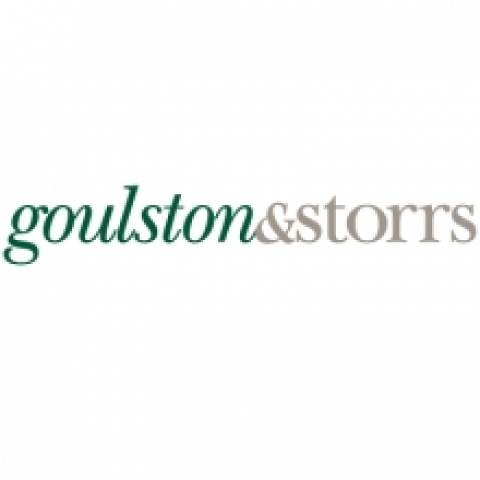Navigating Lender Liability Complexities & Minimizing Risk
As lenders and borrowers try to get creative in working through ongoing distress in the real estate market, especially in certain asset classes, it is crucial for lenders to understand the nuances of lender liability claims.
While lender liability is not a distinct legal cause of action, it encompasses various claims that borrowers or third parties might bring against lenders. These claims often arise from the lender's actions at different stages of a lending transaction, most often after a default. Understanding the types of claims, recent case law, and best practices for minimizing exposure is essential in today’s financial environment.
Understanding Lender Liability
Lender liability refers to a range of claims where a borrower, guarantor or third party argues that a lender is responsible for damages, or that an obligor under the loan should be relieved from repaying a loan. Common grounds for these claims include breach of loan documents, oral modifications or waivers, breach of the implied covenant of good faith and fair dealing, and the exercise of excessive control over the borrower's business. These theories can lead to significant legal disputes, making it imperative for lenders to act prudently and within the bounds of their agreements.
Common Lender Liability Claims
-
Breach of Loan Documents: Loan documents are contracts, and any breach by the lender, such as failing to make an advance or improperly crediting payments, can lead to claims. Borrowers often assert that the lender's actions did not fulfill the notice requirements or other contractual obligations specified in the loan documents.
-
Inadvertent Modifications or Waivers: Despite clauses in loan agreements requiring modifications to be in writing, borrowers may claim that they relied on the lender's oral statements or conduct (including inaction), leading to promissory or equitable estoppel. This type of claim is fairly common and hinges on the borrower's reasonable reliance on the lender's conduct.
-
Breach of the Implied Covenant of Good Faith and Fair Dealing: Although this doctrine's applicability is relatively rare and varies by jurisdiction, it remains a potential risk. A recent New York Commercial Division decision highlighted this risk in the Newage Garden Grove case, in which a borrower, an owner of a hotel near Disneyland, successfully pleaded claims that a lender, through its special servicer, acted in bad faith by delaying settlement terms, leading to additional costs and preventing the borrower from curing defaults.
-
Lender Control: Lenders sometimes exercise control over a borrower's business upon default, which can lead to liability claims if such control harms the borrower or third parties. This includes situations where the lender’s actions go beyond what is necessary for protecting its interest and interfere excessively with the borrower's operations. In the Bailey Tool case, the lender, a factoring company, was found liable for tortious interference after excessively controlling the borrower’s cash flow and business operations. The court noted that the lender’s agreements were overly one-sided, emphasizing the need for lenders to exercise control reasonably and avoid actions that could unduly harm the borrower. We expect to see more of these type of control claims being brought by borrower parties with the increased use of lender proxy rights to take over management of a borrower, or a borrower’s property, without foreclosing on the collateral.
Less common lender liability claims may include duress, statutory unfair practices, negligent administration, equitable subordination, recharacterization of the relationship, and various business torts such as tortious interference with contract or business advantage, and fraud and RICO violations.
Reducing Exposure
To mitigate the risks of lender liability, lenders should adhere to several core principles. Most importantly, they should enter into a pre-negotiation agreement before engaging in any substantive discussions with the borrower. These agreements memorialize the parties’ understanding of the ground rules that will govern the loan modification negotiations and set expectations in the event an agreement is not reached. Second, maintain a professional and respectful tone in all communications with the borrower while always reserving rights and remedies if granting leeway. Once the tone becomes unfriendly, the borrower is likely to scrutinize every aspect of the lender’s behavior, to influence the perception of the judge, jury or arbitrator.
Lenders should also be mindful of time and carefully consider extensions, keeping them as brief as possible while documenting any modifications with clear reservations of rights and non-waiver language. Long delays may prolong the borrowing relationship and result in lender fatigue, resulting in an increased willingness to make concessions that a lender may later regret. Time is not always on the lender’s side as corporate transactions, portfolio transactions, personnel changes, or regulatory actions (i.e., an RTC or FDIC takeover)may deprive the lender of institutional memory and give the borrower an opportunity for a better deal.
It is also wise for lenders to avoid over-involvement in the borrower’s business to prevent claims of control, exercise the traditional virtues of prudent lenders, handle transitions with care, and meticulously follow internal procedures to avoid any lapses that could be used against the lender in a dispute.
Finally, with each short-term extension or forbearance to accommodate the pace of ongoing negotiations, lenders should obtain waivers and releases from their borrowers and guarantors. These safeguards can protect a lender from potential claims if things later go sideways.
Conclusion
While lender liability cases peaked in the 1980s and have certainly been more rare in the last decade, the risk remains real, as illustrated by recent decisions in cases like Newage Garden Grove and Bailey Tool. Lenders should remain vigilant about these risks and implement best practices to minimize their exposure. While future developments in liability law will likely continue to shape lender and borrower interaction, lenders should continue to monitor trends, maintain rigorous documentation, adhere to agreements, and foster transparent relationships with borrowers. By doing so, they can better navigate the complexities of lender liability and protect their interests in the evolving financial landscape.
Do you want more information?
 Douglas Rosner
Douglas RosnerDoug Rosner is a bankruptcy and restructuring attorney who represents clients throughout the country and internationally.

